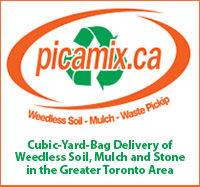
 |
|
Customer Login Home Annuals Perennials & Biennials Fragrant Annuals Fragrant Perennials Trailing & Climbing Vines Ornamental Grasses Special Mixes & Collections Vegetables Medicinal & Culinary Herbs Supporting Bees & Butterflies Gift Certificates Fundraising Seed Favours For Special Events Our History Dirk's Message About Our Seeds Testimonials What Is A Cottage Garden? Saving Your Seeds Download Our Catalogue Printable Order Form Privacy Policy Ordering Information Shipping Information GARDEN SUPPLIES  IN THE NEWS   |
 Saving Your SeedsHere are some basic steps to save your own seeds. It is a very rewarding (and money saving) project. Make sure that the plants that you are saving your seeds from are non- hybrid, open pollinated plants. Seeds from hybrid plants will not produce the same plant as the parent. Collect seeds only from the healthiest, most robust plants. Collect seeds from multiple plants to ensure a broad genetic diversity within your seed collection. Harvest when you can see that the seeds are fully formed and ready to drop. You can also remove the seed heads when they have started drying and let them finish drying in a warm dry place. Fruits (e.g. tomatoes, peppers, cucumbers) should be harvested when they are fully ripe. For open seeds, separate the seeds and spread them out in a cool dry place to finish drying. For fruits, cut them open and remove the seeds. If the seeds are basically dry, separate the seeds and let them air dry. For seeds like tomatoes and other slimy seeds, the anti sprouting coating needs to be removed. This can be done by putting the seed and pulp in a glass container and adding enough water to get them floating. Leave it in a warm, sunny spot for several days until a mouldy scum forms. Remove the scum and floating seeds. Rinse the remaining mixture until the seeds are clean. Spread the seeds out on a tray and leave them until they are dry. (3 or4 days) Many larger seeds can be easily cleaned by hand. For small seeds you can use a small fan to blow off most of the chaff. You can determine how much chaff you can live with. You can also use a fine screen to sift small seeds through. Just make sure that there is no green matter left as that will promote mould in your seeds. For storing your seeds, make sure that they are perfectly dry. Seeds should break rather then bend. Larger seeds such as beans and peas should shatter rather than squish if crushed. Store seeds in a paper or plastic bag in a cool, dry location. The most important words for storing seeds are COOL and DRY. P.S. Don't forget to label and date your seeds. Have fun!! Dirk. Members of: |
| Visit Our Facebook Page |